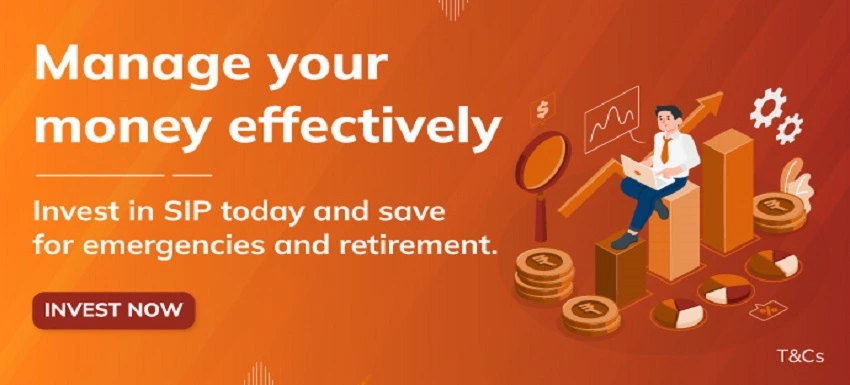THE
ORANGE
HUB
Large Cap vs Mid Cap Mutual Fund

When you decide to invest in Mutual Funds in India, you might come across terms like Large-cap and Mid-cap Funds. Think of these funds as different tools for your savings, like a big umbrella or a medium-sized umbrella. Each have their purpose and work best in specific situations.
In this blog we will discuss about Large-cap vs Mid-cap and explain why they can be good for your savings goals. This post will even point out some of India's best-performing Large-cap & Mid-cap Mutual Funds.
What are Large-cap and Mid-cap Funds in India?
Large-cap and Mid-cap Funds are categories of Mutual Funds that invest in stocks of companies with varying market capitalisations.
Large-cap Funds
Large-cap Funds primarily invest in stocks of well-established, large companies listed on the stock exchange. These companies are typically market leaders in their respective sectors and are known for their stability. Large-cap Funds aim to provide steady returns over the long-term and are considered relatively less risky than the Mid-cap and Small-cap Funds.
Mid-cap Funds
Mid-cap Funds, on the other hand, invest in stocks of companies with medium-sized market capitalisations. These companies are often in a growth phase and have the potential to deliver higher returns than large-cap companies. However, they also come with a higher level of risk and volatility.
Investing in Mid-cap Funds in India can offer several advantages, including:
Potential for higher returns
Mid-cap companies have the potential for rapid growth, which can result in higher returns for investors.
Diversification
Mid-cap Funds typically invest in a diversified portfolio of mid-sized companies, spreading the risk across various sectors.
Market leadership
Some mid-cap companies may become future market leaders and investing early can be rewarding.
Risk and reward balance
While Mid-cap Funds carry more risk than Large-cap Funds, they are less risky than Small-cap Funds, striking a balance between risk and potential reward.
Things to consider before investing in Mid-cap Funds in India
Before you invest in Mid-cap Funds in India, consider the following factors:
Risk tolerance
Evaluate your comfort with risk, as Mid-cap Funds tend to experience more price swings than Large-cap Funds, potentially impacting the returns unpredictably.
Investment horizon
Make sure your investment timeline associated with the mid-cap investments is for a longer period for optimal results.
Diversification
Verify that your investment mix spreads across various asset types to handle risks efficiently while balancing the potential gains.
Performance history
Investigate the fund's past performance and track record in providing reliable returns to make well-informed investment decisions.
Expense ratio
Analyse the cost structures of different Mid-cap Funds to reduce the expenses, helping you maximise your investment returns over time.
Top 5 performing Large-cap & Mid-cap Mutual Funds in India
Let us take a look at some of the top performing Large-cap & Mid-cap Mutual Funds in the Indian market based on their returns in the last 3 and 5 years:
ICICI Prudential Large & Mid Cap Fund Direct Plan-Growth
In the last 3 years, it offered a return of 28.49%. Over the period of 5 years, it offered a return of 19.10%.
Quant Large and Mid Cap Fund Direct-Growth
In the last 3 years, it offered a return of 29.50%. Over the period of 5 years, it offered a return of 21.18%.
HDFC Large and Mid Cap Fund Direct-Growth
In the last 3 years, it offered a return of 29.16% Over the period of 5 years, it offered a return of 19.63%.
Motilal Oswal Large and Mid Cap Fund Direct-Growth
In the last 3 years, it offered a return of 27.30%.
Mahindra Manulife Large & Mid Cap Fund Direct-Growth
In the last 3 years, it offered a return of 26.96%.
Please note that the past performance is not indicative of future results and it is essential to conduct thorough research and consider your financial goals before making any investment decisions.
Risks associated with Mid-cap Funds in India
While Mid-cap Funds in India offer the potential for higher returns, they also come with specific risks that investors should be aware of:
Market volatility
Mid-cap Stocks can be more volatile than Large-cap Stocks, which means that their prices can fluctuate significantly in a short period. This volatility can result in higher risks for investors, especially during the market downturns.
Liquidity risk
Mid-cap Stocks may not be as liquid as Large-cap Stocks, making it harder to buy or sell them quickly, particularly during a market turmoil.
Business risk
Mid-cap companies are often in a growth phase and their business models may be less established as compared to the large-cap companies. This can make them more vulnerable to economic downturns or industry specific challenges.
Limited track record
Some mid-cap companies may lack a long track record of consistent performance, making it challenging for investors to assess their future prospects.
Sector concentration
Mid-cap Funds may have a higher concentration of stocks from specific sectors or industries, which can amplify risk if those sectors face challenges.
It is crucial for investors of Mid-cap Funds to have a clear understanding of these risks and to align their investment strategies accordingly.
Choosing between Large-cap and Mid-cap Mutual Funds depends on your risk tolerance, investment horizon and financial goals. Always consider the Large-cap vs Mid-cap factors before investing. Large-cap Funds offer stability, while Mid-cap Funds offer growth potential with higher risks. Carefully evaluate your options and consult with a financial advisor before making any investment decisions. Diversification across different asset classes and regular portfolio reviews are essential for long-term financial success.
Scroll to top











